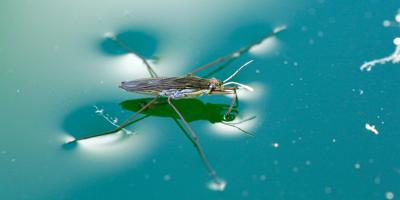House Centipedes: Nightmare or Fantasy?

When you nearly smoosh a centipede as you’re stepping into the shower, or when one of these leggy creatures stares you down as you reach for your toothbrush, you might feel repulsed. Whether or not you’re an entomophobe (one who suffers from an irrational fear of insects), the truth is, house centipedes do a whole lot more good than harm.
House Centipedes Help Defend Your Home
First off, let’s dispel this myth right away: Centipedes don’t actually have 100 legs, despite what their name implies. They usually have closer to 30, which they can use to scurry across the floor at a breakneck pace of about 1.3 feet per second—that’s almost one mile per hour. That same Olympic speed that makes centipedes extra freaky to us humans is part of what actually makes them super helpful to us as well.
You see, house centipedes kill and eat other bugs, and we’re not talking just a few little pests, we’re talking big, ugly, far freakier bugs of the variety you definitely don’t want in your home. In fact, some people even embrace Why you should let this creepy bug live in your house for this very reason.
House centipedes gravitate toward the more humid areas of your home, where cockroaches, termites and silverfish can usually be found. That’s where they corner your home’s real pests before killing and devouring them.
It’s not just their speed that makes them such ruthless killers; house centipedes have a secret weapon: their front two legs are actually fangs filled with venom. They lasso their prey with their actual legs, then pierce it with their poisonous “leg-fangs,” finally feasting on its corpse before hightailing it to go find another meal.
Turns out, centipedes are quite murderous little creatures, spending most of their day hunting for and eating their prey. Thankfully, house centipedes are frankly too afraid of humans and do not actively seek them out as any sort of prey. So don’t panic; you and your family have nothing to worry about. However, larger species of house centipedes can bite if they feel threatened, especially when roughly handled. This bite can result in pain described as similar to a bee sting. A good rule of thumb is to leave them alone.
House Centipedes: Akin to Itsy-Bitsy
Similarly, spiders also are known for beneficially managing the insect population in your home; however, spiders aren’t quite as deserving of such a reputation. Unlike centipedes, spiders are passive predators, merely spinning a web and waiting for prey to get caught in the trap. Centipedes are hunters, and hungry ones at that.
The fact of the matter is, the presence of both spiders and centipedes in your home isn’t in and of itself a concern, it’s the problem their presence reveals. If your home didn’t have an abundance of insects on which to feed, it wouldn’t have spiders or centipedes either. That means if you want to get rid of house centipedes, you have to get rid of the underlying, but invasive, true pest problem.
Pest control approaches vary greatly depending on what you’re dealing with, as well as countless other factors such as time of year and the type of property (woods, farmland, city, suburbs, etc.).
Regardless, if you’re seeing centipedes, you likely have great numbers of multiple pests, at which point your best move is to call a pest control professional who can address all of your concerns.
Take care of everything at once with our Home Protection Plan, which protects against 50+ different types of household pests.



